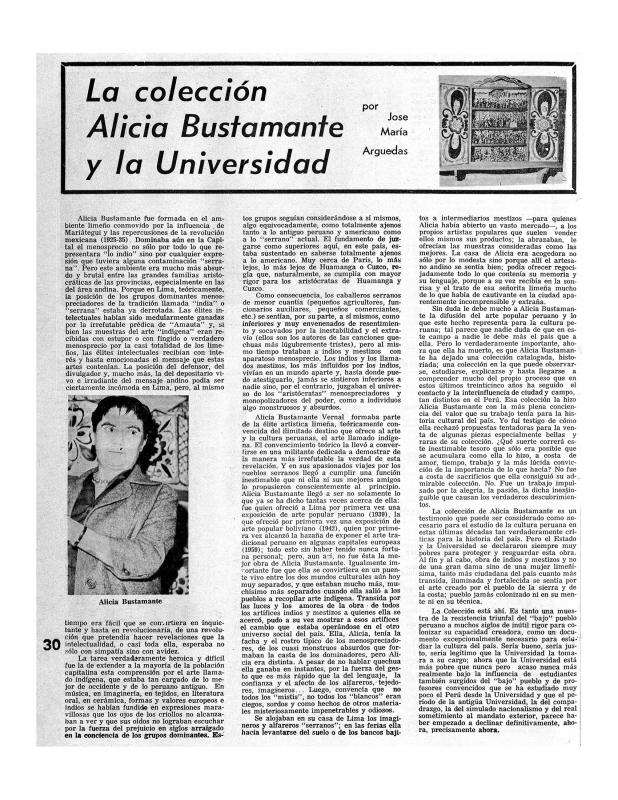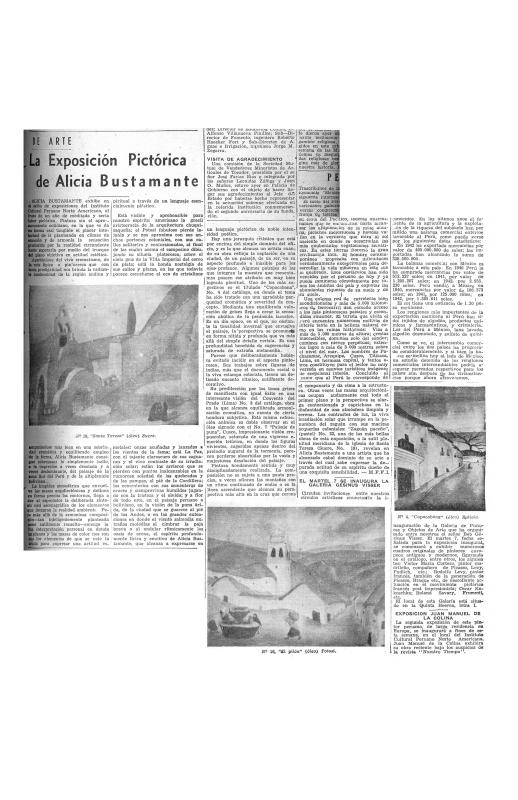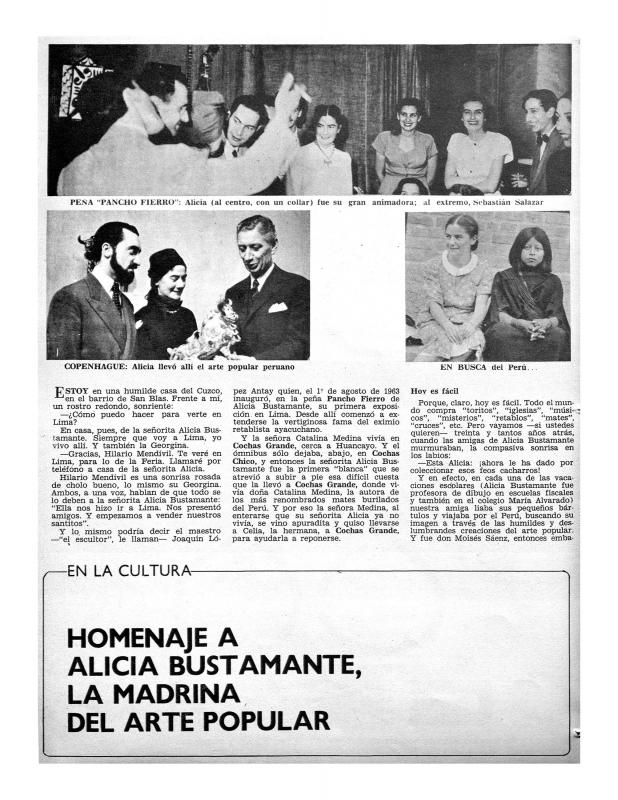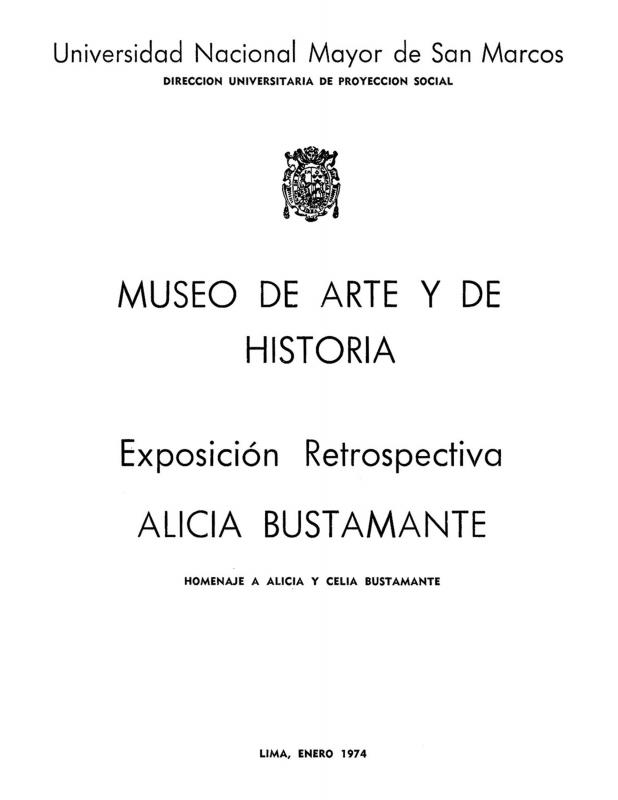In their effort to find true “Peruvian art,” Indianist painters not only used local motifs in their own work, but also began studying and revalorizing local popular art. They traveled around the entire country, making contact with native and mestizo producers whose names and works gradually became known in the Peruvian capital. One important figure in that project was Peruvian painter and educator Alicia Bustamante, who studied at the Escuela Nacional de Bellas Artes under José Sabogal (1888 –1956), the founder of pictorial Indianism in Peru. Sabogal not only influenced Bustamante’s work, but also shaped her interest in local popular art.
While major shows of Bustamante’s painting were held at venues like Viña del Mar (1937), the Instituto Cultural Peruano Norteamericano de Lima (1944), La Paz (1944), and the Galería Lima (1956), her most important contribution was as an advocate of local rural popular arts in urban areas, which proved decisive to a new understanding of art in the country. Bustamante, along with Sabogal and a group of Indianist painters, studied traditional art at the Museo Nacional’s Instituto de Arte Peruano (IAP). She formed the first and one of the most important collections of Peruvian popular art, which was exhibited regularly at the Peña Pancho Fierro (Lima, 1936–67), a venue that—largely at Bustamante’s initiative—housed gatherings and debates on politics, literature, and art. Peña Pancho Fierro was frequented by major figures interested in Indianism and by personalities in the Peruvian avant-garde, individuals like César Moro (1903–56), Fernando de Szyszlo (b. 1925), and Jorge Eduardo Eielson (b. 1924). In keeping with Bustamante’s wishes, major portions of her collection were donated to the Museo de Arte of the Universidad Nacional Mayor de San Marcos in Lima and to the Galería Latinoamericana de la Casa de las Américas in Havana, Cuba pursuant to her death in 1968.
For further reading on Bustamante, see José María Arguedas’s “La colección Alicia Bustamante y la universidad” (ICAA digital doc. no. 1139559); M.F.F.I.’s “De arte: la exposición pictórica de Alicia Bustamante” (doc. no. 1139459); Winston Orrillo’s “En la cultura: homenaje a Alicia Bustamante, la madrina del arte popular” (doc. no. 1139542); C. R.’s “La exposición de paisajes de Alicia Bustamante” (doc. no. 1139476); and Francisco Stastny’s “Introducción”(doc. no. 1139585).





